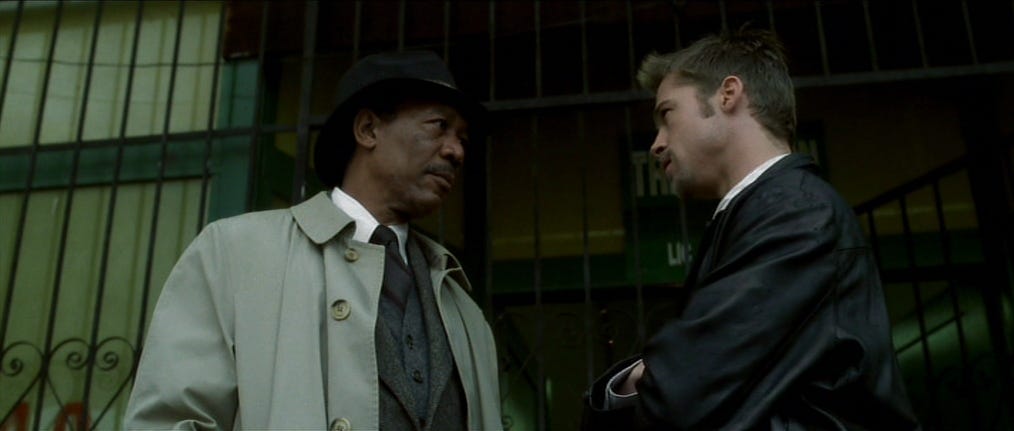Classic Review-Se7en
Fincher's classic serial killer thriller remains relevant nearly 30 years later
I’ve been focusing more on new movies lately along with new episodes of my podcast, so it’s been a few weeks since I’ve been able to tackle older movies for classic reviews. This week, I’m looking back at the 1995 David Fincher film Se7en.

Usually I don’t post reviews of films I’ve seen before, and I know I’ve watched Se7en within the last few years, but this was a good exception. The film came back to my attention when I received a preview copy of an updated edition of the BFI Film Classics book covering it by Richard Dyer. I am trying to get him on the podcast to talk about the film, so cross your fingers and stay tuned for that.
If you’ve never seen the film, beware, this review will contain some spoilers.
The basic story is a “cops chasing serial killer” setup. Somerset (Morgan Freeman) is a veteran detective who is just days away from retirement (seven days to be exact). Mills (Brad Pitt) is the new detective assigned to work with Somerset for his last week and they land on a case involving a serial killer who is killing his victims in line with the seven deadly sins.
The first victim is known only as “Fat Man,” the epitome of gluttony. This is quickly followed by a lawyer killed (greed) and a man who has laid in bed for a year (sloth). The film pauses a bit in the middle to set things up with Mills’s wife Tracy (Gwyneth Paltrow) before ratcheting up the tension for the last 30-40 minutes.
Here come the spoilers, you’ve been warned.
The true highlight of the film is Kevin Spacey as the killer, Jonathan Doe. Despite the allegations against him in the intervening years (or perhaps because of them) his portrayal of the methodical, focused killer is chilling. When you watch the film with knowledge of the ending, it’s hard not to be watching for Spacey’s face in early scenes before a first time viewing audience (or the detectives) know who he is. But even knowing his role and how he is toying with the police, it’s hard to really see how anyone would know the killer was hiding in plain site, until of course he walks into the police station to turn himself in.
It’s rare that a film like this that is entirely reliant on the surprise in the third act can still hold the viewer’s attention on repeat viewings, but I found myself completely invested, especially in the long drive out to the middle of nowhere with Mills, Somerset, and Doe in the car. I knew where they were going, I knew what would meet them there, but I still (literally) sat on the edge of my seat as I watched.
Keep reading with a 7-day free trial
Subscribe to The Oscar Project to keep reading this post and get 7 days of free access to the full post archives.




